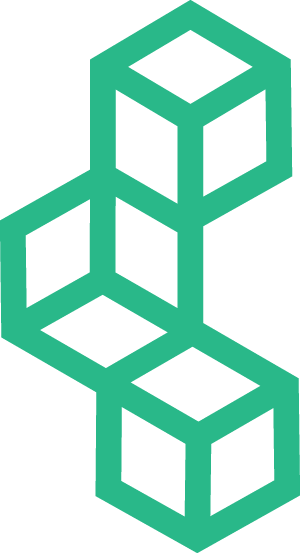Managing a facility isn't what it used to be. Gone are the days of manual processes and never-ending spreadsheets. Today, successful facility management requires a streamlined and efficient approach driven by technology.
Ready to see how next-generation software is transforming every aspect of facility management? Let’s explore what’s possible when you harness data, automation, and innovation to power your organization forward.
The Ultimate Guide to Facilities Management Software
Whether you're overseeing a multi-building campus, a corporate office, or a stadium, Facilities Management Software (FMS) has become a game-changer. With the right software, you can take control of your facility's day-to-day operations, improve efficiency, and reduce costs—all from the convenience of your desktop or smartphone.
In this comprehensive guide, we'll delve into how facilities management software operates, the key features to consider, and how these tools can benefit your organization. By the end, you'll know exactly what to consider when choosing a solution and how to implement it for maximum impact.
The guide covers:
- What FMS is and how it works
- Core features to look for
- Benefits of implementation
- Tips for choosing the right solution
What Is Facilities Management Software?
Facilities Management Software (FMS) is a digital platform that enables organizations to manage their buildings, assets, maintenance, and operations in a centralized and efficient manner. From scheduling preventive maintenance to tracking work orders, space utilization, and capital projects, a robust FMS makes complex tasks more manageable and data-driven.
Whether cloud-based or on-premise, FMS gives facility teams the tools they need to make informed decisions, extend the life of assets, stay compliant, and streamline day-to-day operations.
Core Features to Look for in Facilities Management Software
Choosing the right software can be overwhelming, so let's break down the must-have features:
1. Work Order Management
Track, assign, and prioritize maintenance requests in real-time. Reduce response times, prevent backlogs, and ensure nothing slips through the cracks.
2. Asset Tracking and Lifecycle Management
Keep tabs on every asset—HVAC, lighting, elevators, plumbing—by logging locations, service history, and projected replacement timelines.
3. Preventive Maintenance Scheduling
Automate recurring tasks to reduce costly reactive maintenance. Set up custom schedules and get alerts before issues arise.
4. Space and Occupancy Management
Monitor how space is being used across your facilities. Optimize floor plans, reduce waste, and plan for future growth or reallocation.
5. Capital Planning
Forecast long-term needs, prioritize projects, and align capital budgets with strategic goals. Systems like Foundation by Intellis go a step further by integrating condition assessments and AI-powered prioritization tools.
6. Mobile Access
A modern FMS should work where you do—on-site, off-site, or on-the-go. Mobile access lets teams update records, capture photos, and manage tasks in real-time.
7. Reporting and Analytics
Generate insights with dashboards and custom reports. From tracking KPIs to identifying trends, analytics turns your data into decision-making power.
Key Benefits of Facilities Management Software
Implementing FMS can lead to significant improvements in efficiency and cost control.
Here's how:
-
Centralized Operations: No more siloed spreadsheets or paper logs. All your data lives on one platform.
-
Faster Response Times: Real-time tracking of requests and automated alerts keep your team ahead of problems.
-
Cost Savings: Preventive maintenance and smarter capital planning reduce the need for emergency repairs, thereby extending the lifespan of assets and minimizing downtime.
-
Enhanced Compliance: Stay current with inspections, safety standards, and reporting requirements to ensure ongoing compliance.
-
Improved Occupant Satisfaction: Quicker repairs and well-maintained spaces lead to happier tenants, employees, or students.
Who Needs Facilities Management Software?
If you manage physical space, you can benefit from FMS.
Typical users include:
- K-12 Schools
- Higher Education Campuses
- Hospitals and Healthcare Facilities
- Government Buildings
- Commercial Real Estate
- Sports Arenas and Convention Centers
- Corporate Offices
- Manufacturing Plants
The scale may differ, but the need for efficient, proactive management is universal.
How to Choose the Right FMS for Your Organization
Start by asking the right questions:
- What challenges are you currently facing in your operations?
- How many facilities and assets are you managing?
- Do you need mobile capabilities or integrations with existing tools?
- What's your budget and timeline?
Make a checklist of must-have features and request demos from vendors who serve your industry. Don't just consider the software—also evaluate the support, training, and onboarding resources that are available.
Implementing Facilities Management Software
Successful implementation doesn't happen overnight, but with a strategic approach, you'll be up and running quickly:
1. Assemble a cross-functional team to oversee the rollout.
2. Audit your current systems and clean up existing data.
3. Set clear goals and timelines.
4. Provide team training and ensure users are comfortable with the platform.
5. Start small, then scale. Consider piloting the software in one building before full deployment.
The Future of Facilities Management Is Data-Driven
Facilities Management Software isn't just about managing repairs and assets—it's about transforming the way you plan, operate, and optimize your buildings. With tools like Foundation by Intellis, you can go beyond basic maintenance to develop long-term, strategic capital plans that ensure safe, efficient, and future-ready facilities.
Ready to Get Started?
Schedule a free demo of Foundation by Intellis to see how our powerful platform can streamline operations, improve asset performance, and help you make data-informed capital decisions.
--
Additional Resources


